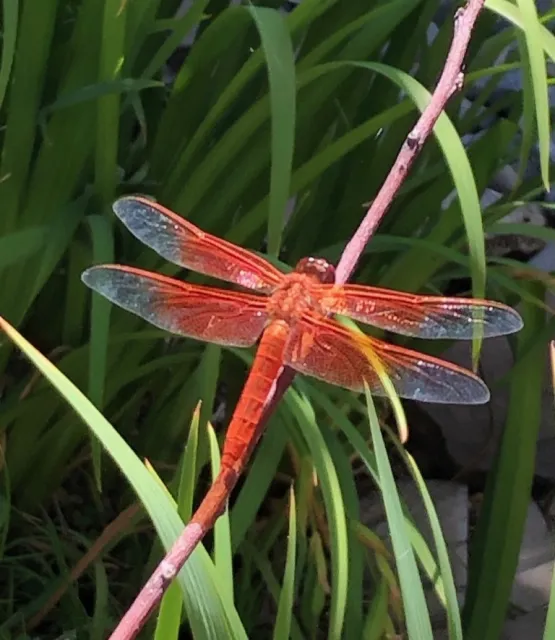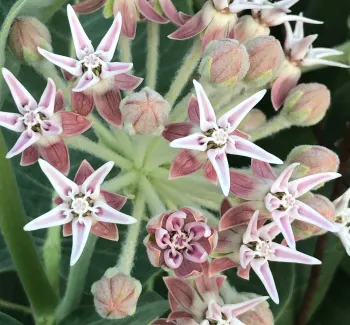Article and photos (adapted) by Tanya Kucak, UC Master Gardener, Yolo County

Spending time in gardens and parks can not only make you healthier and happier, it can also make you more resilient and “a better member of civilization,” Florence Williams said in a keynote talk at the 2023 Wild Wonder conference. Williams has traveled around the world to interview scientists studying the connections between nature and mental health. She wrote about this research in her book Nature Fix: Why Nature Makes Us Happier, Healthier, and More Creative.
For instance, in Japan, she learned that fifteen minutes of walking forest therapy trails resulted in reduced blood pressure, lower heart rate, and lower levels of stress hormones. In South Korea, “healing forests” are “managed for mental health and well-being.” Denmark has twelve-week horticultural therapy programs for people with severe depression, which are “the most successful return-to-work intervention” there.
On a larger scale, epidemiological studies have shown that living within one kilometer of green space is correlated with better health: lower incidence of fifteen stress-related diseases in a Netherlands study of four hundred thousand people; and lower mortality rates in a United Kingdom (UK) study of ten thousand people, after adjusting for income. In effect, Williams said, green space is a “social-leveling device”: the lower-income people in the UK study who lived near green spaces had a “gain in health equivalent to a much higher income.”
In the lab, cognitive neuroscientist David Strayer measured brain activity in people before and after a walk on a nature trail vs. a walk along a busy street. The nature-walkers reported fewer negative thoughts after their walk. Strayer found the brain region associated with rumination -- self-referential, self-critical, and negative thinking -- had less activity in those who took the nature walk. What parts of the brain are activated instead? As a backpacker, Strayer noticed that his best ideas came after three days, so he gave people creativity tests and found almost a fifty percent improvement in creativity after three days of backpacking. Time outside and away from cognitive demands (including phones) increases activation in the parts of the brain associated with empathy and sensory perception. Instead of being consumed by inward dialogue, the brain becomes outwardly focused.
Simply showing people a photo of a whale or a waterfall, versus a mall or highway, induces people to give more to charity and “act in ways that are more pro-social and less self-interested,” Williams said. People who were asked to draw themselves in the landscape at Yosemite, versus Fisherman's Wharf, drew themselves as smaller. “This little bit of ego depreciation in the face of grandeur makes us feel more connected to everyone else, and that's incredibly good for mental health,” she said. “Big shifts can happen when you're outside in nature, open to awe.”

Researchers at the Human Connectome Project in Utah found that the people who had the most connections in the brain also rated themselves as most sensitive to beauty and to experiencing awe, and were most resilient to life stressors.
Awe is something mind-blowing (defined as “an emotional response to perceptually vast stimuli that transcend current frames of reference”). Williams observed that people can toggle between awe and self-referential thinking, but “the moretime you spend in awe, the less time you're going to be spending on dramatizing your problems.” Awe is “a pathway to mental health,” she said.
And you don't have to travel far to experience awe and begin to transform your brain. To get what psychology professor Dacher Keltner calls microdoses of awe, just go outside, find something beautiful, and pay attention to it. “Take three breaths in the presence of this beautiful whatever it is,” Williams said. If you can't go outside, find something indoors that engages your senses -- a bowl of soup or a house plant, she suggested. Doing this at least once or twice a day for six weeks is linked to a reduction in symptoms of depression and anxiety, as well as significant reduction in physical pain symptoms. “Beauty is this secret weapon that people don't talk about,” she said. “You can become better at it.”
“Nature is a bridge,” Williams said. “There's beauty everywhere,” and the more we can learn to cultivate a sense of awe, “the closer we will feel to each other, the more we will feel like we can solve problems” and become a better citizen of the world. Because it enhances pro-social behaviors, experiencing awe can help us feel “more positive about our future and who we are.”
An earlier version of this article appeared in the Spring 2024 Total Wellness magazine, published by the Los Altos Town Crier on May 28, 2024.
